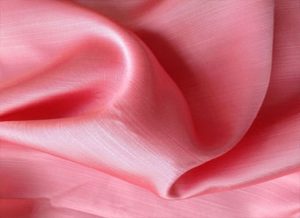Bamboos are evergreen perennial flowering plants in the subfamily of some of the grass families. The word “bamboo” originated from the Dutch or Portuguese languages, which were probably borrowed from Malay.
It is one of the fastest-growing plants in the world, due to a unique rhizome-dependent system in the root. Certain species of bamboo can grow 910 mm (36 in) within a 24- hour, at a rate of almost 40 mm (1 1⁄2 inch) per hour. The Giant bamboos are the largest member of the grass family.
As a fiber, bamboo is a natural cellulosic regenerated biodegradable environment-friendly material. Not only a green fiber but it has also an inherent property of antibacterial and UV protective properties, which makes it a unique eco-friendly textile material in the 21st century.
It is not only used in conventional textiles but also it is very useful for high performance end uses as a composite material due to high tensile strength, durability,
and stability.
Bamboo Fabric Properties
1) Soft and Breathable
With all-natural ingredients, the Bamboo fabric is excellently soft and comfortable.
2) Another name
Bamboo fiber is called by different names in some places like- Bamboo Fabric, Bamboo rayon, bamboo linen bamboo yarn, etc.
3) Excellently Durable
This fabric is not only comfortable but also has features like excellent durability. Due to its durability feature, it is widely used in many household applications.
4) Fabric materials:
The fabric material which is used in this fiber is Bamboo yarn.
5) possible thread count
The possible thread quantity found in this fiber is 300-600.
6) Breathability
The breathability of the Bamboo fabric is excellent.
7) Moisture-wicking capability
It is a material with excellent moisture-wicking capability.
8) Heat retention capabilities
The heat retention capacity is not very well so must try to keep away from the
sun or heat.
9) Prone to bubbling
This fiber can bubble in water.
10) Biodegraded Fabric
Bamboo fiber can be decomposed naturally without releasing harmful pollutants into the environment. It is made through a wholly natural process so it’s an Eco-friendly material. It’s biodegradable since it’s made wholly of cellulosic material.
11) Stretchability
Clothes with this type of fiber are well-stretchable.
12) UV absorption
The cloth produced from bamboo has a high level of UV absorption capacity. It can protect the skin from the sun’s ultraviolet radiation. So totally it’s safe to use as clothes.
13) Washing temperatures
Warm washes of this type of clothes are advisable.
Application Of Bamboo Fiber
Fiber is mostly used in household and garment applications. The bamboo fabric produces various household applications like blankets, bed sheets, mattresses, towels, and hand towels. Bamboo fabric is also heavily used in the garment sector for its softness, durability, and eco-friendly properties. Apart from Tshirts, underwear, and socks, other applications in the garment industry are made of this type of fabric.
Conclusion
We should think of all environment-friendly clothing solutions to keep pace with the demands of the current environment. Bamboo fabric is an eco-friendly fabric that can reduce the negative impact on the environment. Moreover, it’s with the biodegradable properties of natural ingredients. So using bamboo fabric is really recommendable for many.


